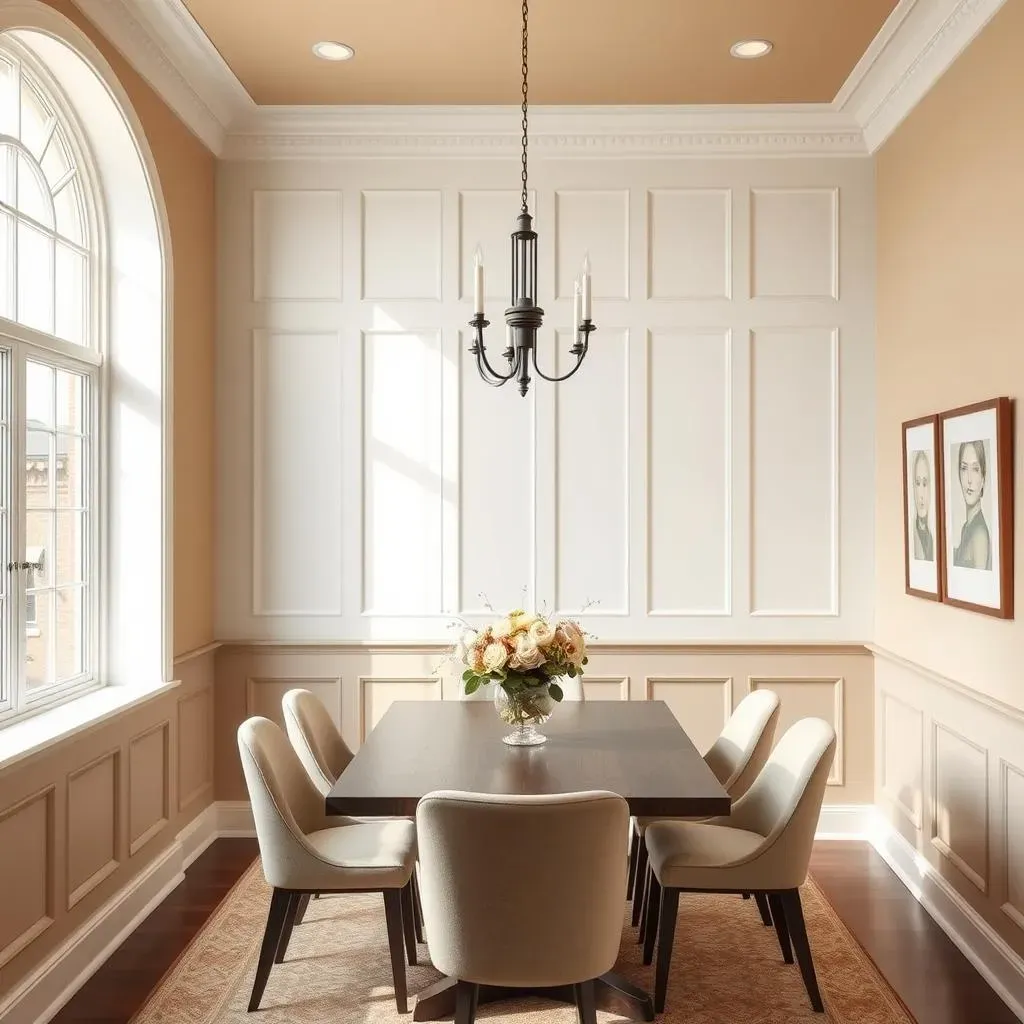Table of Contents
Want to give your dining room a dramatic makeover without breaking the bank? Then get ready to explore the world of dining room accent wall ideas with board and batten! This versatile and surprisingly easy-to-install design element can transform a bland space into a stylish focal point. In this article, we'll walk you through everything you need to know, from choosing the perfect board and batten style to match your existing décor to mastering the installation process – whether you're a seasoned DIY enthusiast or a complete beginner. We'll uncover clever tips for keeping your project budget-friendly and explore various painting and finishing techniques to make your accent wall truly shine. Get ready to be amazed by the stunning results you can achieve, and prepare to be inspired by the endless possibilities of board and batten! Let's dive in and discover how you can create a dining room that's as unique and captivating as you are.
Choosing the Perfect Board & Batten Style for Your Dining Room
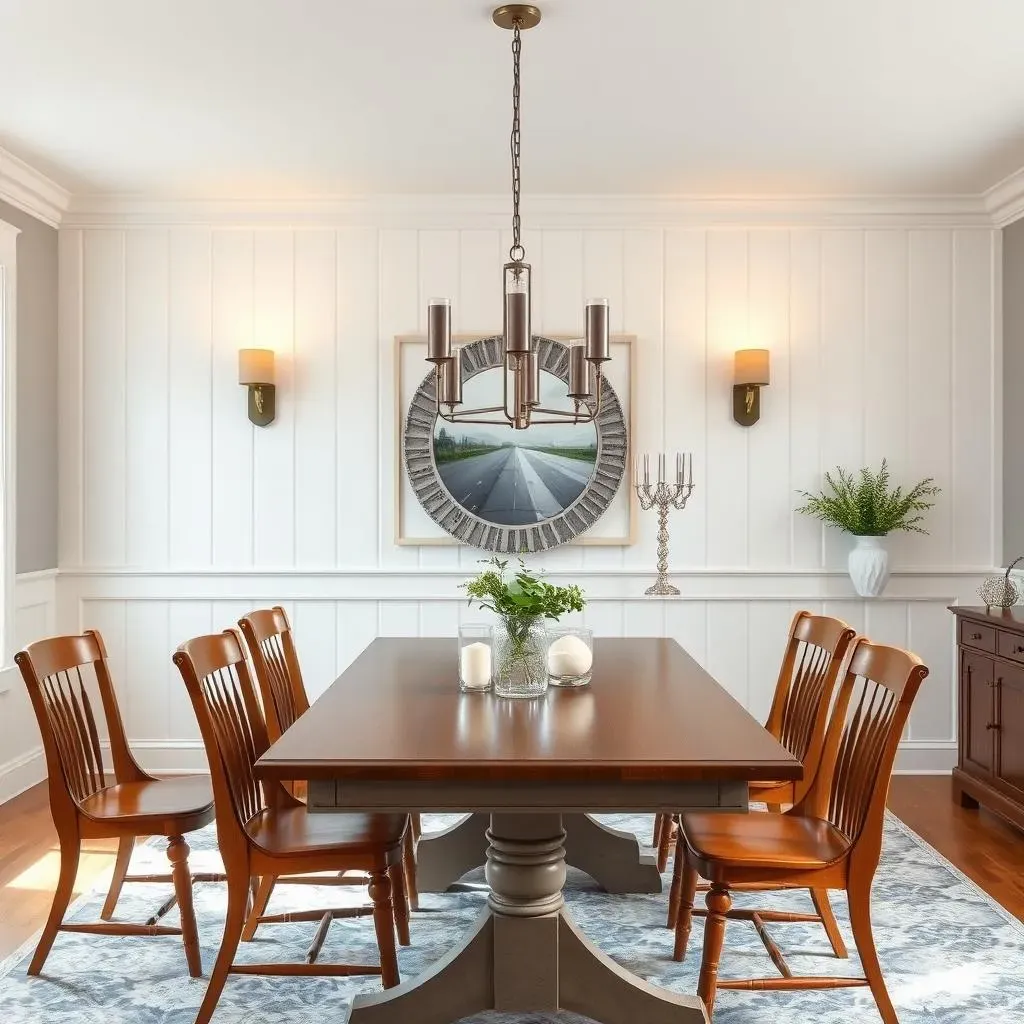
Choosing the Perfect Board & Batten Style for Your Dining Room
Classic Horizontal Board & Batten
The classic horizontal board and batten is a timeless choice. Think clean lines, a touch of elegance, and a surprisingly versatile look that works in almost any dining room. This style is perfect for creating a sense of calm and order, especially in rooms with high ceilings. The horizontal lines visually widen the space, making it feel more open and airy. It's a great option if you're aiming for a sophisticated, traditional aesthetic, or even a more modern minimalist feel, depending on your paint color choices. For example, a crisp white board and batten against a light grey wall creates a clean, contemporary vibe, while a darker, richer paint color can add warmth and drama.
Consider the scale of your dining room. In smaller spaces, thinner boards will make the room feel less cramped. For larger spaces, you have more freedom to experiment with thicker boards or even a combination of board widths for visual interest. Don't forget to check out our ideas for budget-friendly dining room accent walls for some additional inspiration!
Board Width | Spacing Between Boards | Overall Look |
|---|---|---|
2-4 inches | 1/2 - 1 inch | Subtle and Elegant |
6-8 inches | 1-2 inches | Bold and Dramatic |
Vertical Board & Batten: A Modern Twist
For a more modern and dynamic look, consider vertical board and batten. Vertical lines create a sense of height, making your dining room feel taller and more spacious. This style is particularly well-suited to rooms with lower ceilings or those that lack natural light. The vertical lines draw the eye upward, adding a feeling of grandeur. You can experiment with different paint colors to create various moods. A bold, dark vertical board and batten can create a dramatic statement, while a lighter shade can enhance the feeling of openness.
If you're thinking of a DIY project, check out our guide on DIY dining room accent wall ideas for step-by-step instructions and helpful tips. Vertical board and batten is also fantastic for adding visual interest to a plain wall, especially if your dining room lacks architectural details. Remember that the choice of wood and paint will influence the overall feel. For a rustic look, opt for reclaimed wood; for a sleek modern feel, consider smooth, painted boards.
- Consider the height of your ceiling.
- Choose paint colors that complement your existing décor.
- Experiment with different wood types for unique textures.
Creative Variations: Beyond the Basics
Don't be afraid to get creative! Board and batten doesn't have to be strictly horizontal or vertical. You can add design elements like a herringbone pattern, chevron, or even incorporate different shapes and sizes of boards to create a truly unique look. Think about adding a decorative chair rail, or using a contrasting color on the battens for a pop of color and visual depth. These variations can add a touch of personality and flair to your dining room. Consider your dining room's style and the overall ambiance you want to achieve. A playful, slightly mismatched design works well in a bohemian or eclectic setting, while a more precise, symmetrical pattern suits a formal or traditional style.
For those living in apartments, have a look at our apartment-friendly dining room ideas for inspiration on space-saving and renter-friendly designs. Remember, the possibilities are truly endless! Don’t be afraid to experiment and let your creativity shine through. The right board and batten design will not only enhance the aesthetics of your dining room but also reflects your personal style.
DIY or Pro? Planning Your Board & Batten Installation
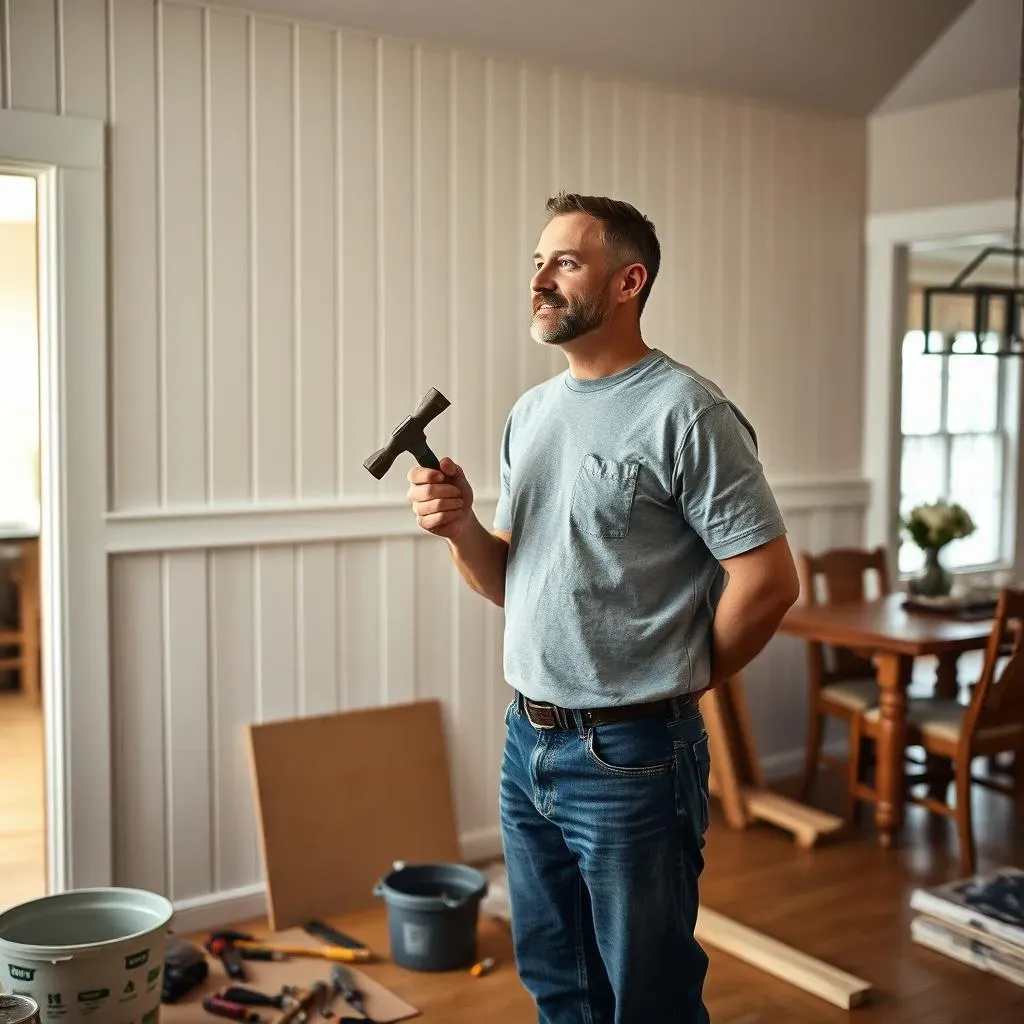
DIY or Pro? Planning Your Board & Batten Installation
Assessing Your DIY Skills
So, you're ready to tackle a board and batten accent wall? Awesome! Before you grab your hammer, let's assess your DIY skills. Honestly, installing board and batten isn't rocket science, but it does require some basic carpentry knowledge and patience. Are you comfortable using power tools like a nail gun or a miter saw? Can you follow instructions precisely, and do you have a steady hand for measuring and cutting? If you answered yes to these questions, you’re probably good to go. However, if power tools make you nervous or precise measurements aren't your thing, hiring a professional might be the wiser choice. Remember, a botched DIY job can cost you more in the long run than hiring a pro from the start.
Planning is key! Before you even think about buying materials, carefully measure your wall and create a detailed plan. Consider the placement of outlets, windows, and doors. How many boards will you need? What type of wood and paint will you use? Creating a detailed plan helps avoid costly mistakes and ensures a smooth installation process. If you need some extra help planning your project, check out these great ideas for DIY dining room accent walls to give you a jumpstart!
- Honest self-assessment of your skills
- Detailed measurements and planning
- Gathering the right tools and materials
Gathering Your Tools and Materials
Once you've decided to DIY (or hired a pro!), it’s time to gather your tools and materials. This is where a well-organized shopping list comes in handy. You'll need things like: wood boards (consider pine for its durability and affordability), nails or screws, wood filler, sandpaper, primer, paint, measuring tape, level, pencil, saw (circular saw or miter saw), and a nail gun (optional, but highly recommended for speed and efficiency). Don't forget safety glasses and a dust mask! Getting all of this together might feel overwhelming, but it’s a crucial step to a successful project. If you're on a budget, remember to check out our cheap dining room accent wall ideas for some smart shopping tips.
Remember, quality materials make a huge difference in the final look and longevity of your accent wall. Don't skimp on the essentials! Investing in good-quality wood and paint will ensure your beautiful board and batten wall stands the test of time. It's also a good idea to have a few extra boards on hand, just in case you make any mistakes during the cutting and installation process. A little extra planning goes a long way! And if you are working with a professional, make sure you're clear about the materials you want them to use.
Tool | Purpose |
|---|---|
Measuring Tape | Accurate measurements are crucial |
Level | Ensures straight lines and prevents unevenness |
Nail Gun | Speeds up the installation process significantly |
Setting Realistic Expectations and Timelines
Whether you're DIYing or hiring a pro, setting realistic expectations and timelines is crucial. Don't underestimate the time it takes to complete this project. If you're doing it yourself, expect it to take longer than you initially think, especially if you're new to home improvement. Factor in time for measuring, cutting, prepping the wall, installing the boards, filling nail holes, sanding, priming, and painting. Rushing the process often leads to mistakes, which can be frustrating and costly to fix. If you're hiring a professional, get a clear quote that includes the estimated timeframe. This helps avoid unexpected delays and additional costs.
Remember, patience is key! Take your time, double-check your measurements, and don't be afraid to ask for help if you get stuck. If you're feeling overwhelmed, remember that even small steps forward contribute to the overall progress. Celebrate your small wins along the way! And if you're looking for inspiration for your dining room, check out our shiplap dining room ideas for additional ideas.
Painting and Finishing Touches: Making Your Accent Wall Pop
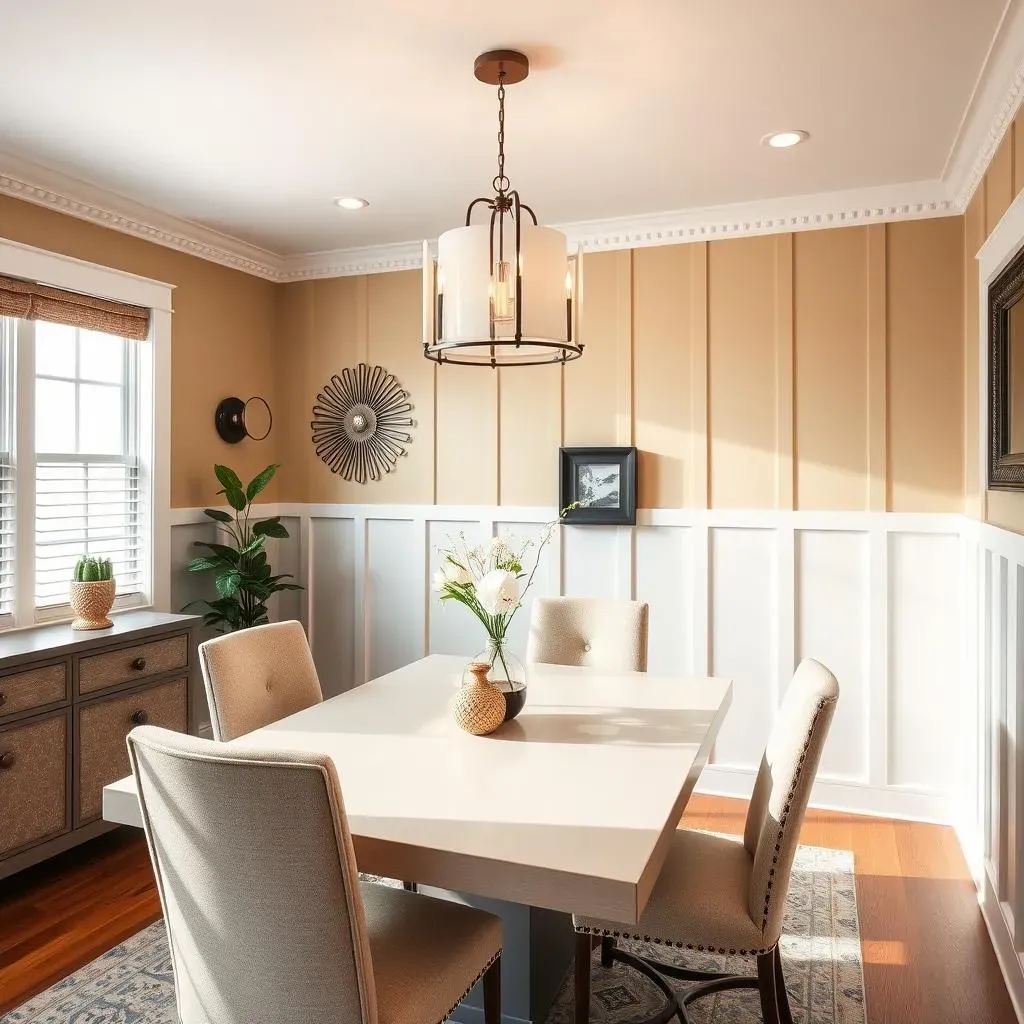
Painting and Finishing Touches: Making Your Accent Wall Pop
Choosing the Right Paint
Okay, your board and batten is up – fantastic! Now comes the fun part: painting! This is where you really bring your vision to life. First, choose your paint. Think about the overall style of your dining room. Do you want a bright and airy space or a cozy and intimate one? A light, neutral color like creamy white or soft grey will make the room feel larger and brighter. These are classic choices that work well with almost any style. For a bolder statement, consider a deep jewel tone like navy, emerald green, or even a dramatic black. Darker colors can create a more sophisticated and dramatic atmosphere, but they might make a small room feel smaller. Remember to always test your paint color on a small, inconspicuous area of the wall first to ensure you're happy with the final shade.
Before you start painting, make sure you've prepped your surface properly. This means filling any nail holes or imperfections with wood filler, sanding everything smooth, and then priming the wood. Priming is crucial for ensuring even paint coverage and preventing the wood grain from showing through. A good quality primer will also create a better surface for your paint to adhere to, resulting in a longer-lasting and more beautiful finish. Don't rush this step! Proper preparation is key to a professional-looking finish. If you're still unsure about your paint choices, browse our selection of budget-friendly dining room ideas for some inspiration.
- Consider the overall style and size of your dining room.
- Test paint colors before committing to a large area.
- Proper preparation (priming, sanding) is essential.
Adding Finishing Touches
Once the paint is dry, it's time for the finishing touches! These small details can make a huge difference in the overall look of your accent wall. Consider adding a decorative chair rail for extra visual interest or using a contrasting color on the battens for a pop of color. You can also add some stylish wall décor, such as artwork, mirrors, or shelves, to complement the board and batten. Remember to keep the overall style of your dining room in mind when choosing your accessories. For example, a rustic-style dining room might benefit from a simple wooden shelf, while a modern dining room might look great with sleek metallic accents.
Finally, step back and admire your handiwork! You've successfully transformed your dining room with a stunning board and batten accent wall. It's a project you can be proud of, and it's a great way to add personality and style to your home. If you're still looking for more inspiration, check out our page on apartment-friendly dining room ideas for some additional tips and tricks. Remember, the possibilities are endless!
Finishing Touch | Effect |
|---|---|
Chair Rail | Adds visual interest and definition |
Contrasting Battens | Creates a bold and stylish statement |
Wall Décor | Complements the board and batten design |
BudgetFriendly Board & Batten: Tips and Tricks for Saving Money
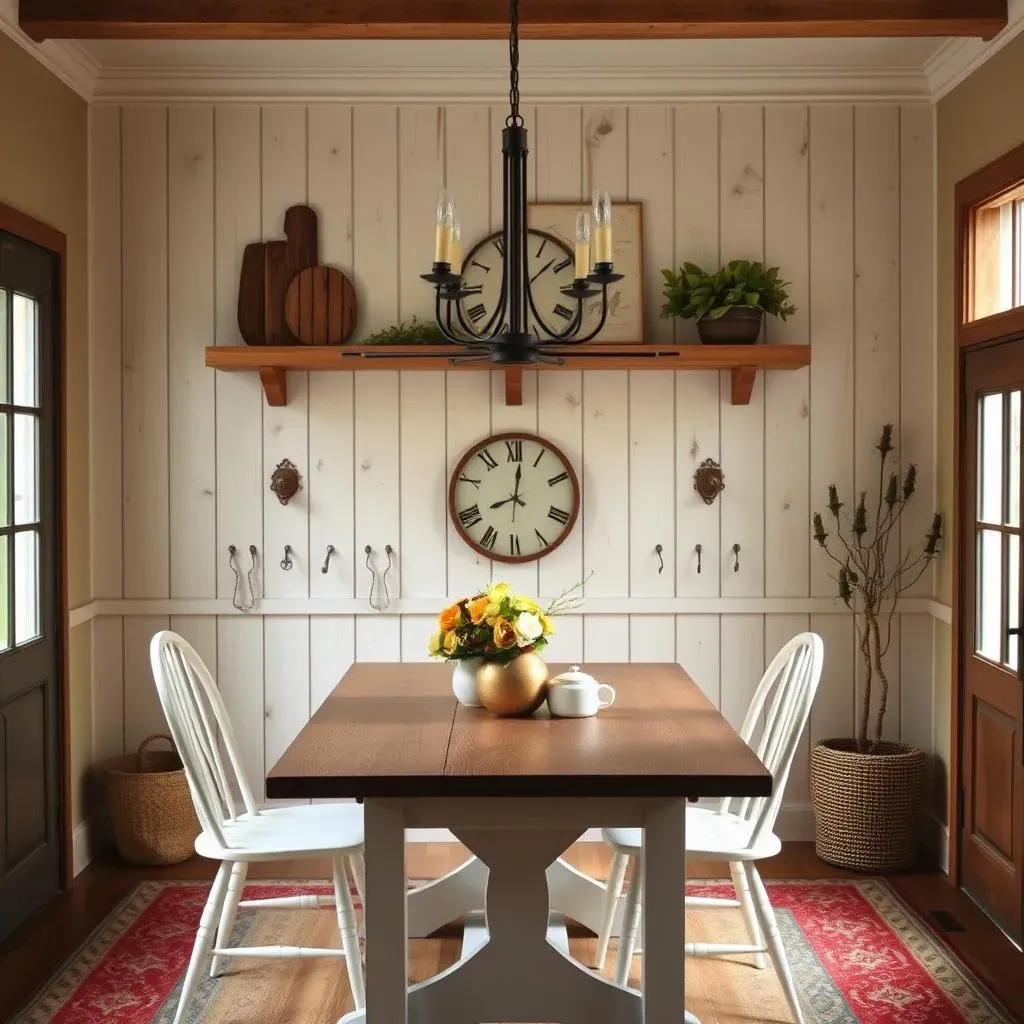
BudgetFriendly Board & Batten: Tips and Tricks for Saving Money
Smart Material Choices
Let's talk about saving money on materials! The most significant expense in a board and batten project is usually the wood. To keep costs down, consider using less expensive wood types like pine or fir instead of pricier hardwoods like oak or cherry. Pine is readily available, durable, and takes paint beautifully. You can also check out your local lumber yards or even salvage yards for reclaimed wood – often, you can find beautiful, character-filled boards at a fraction of the cost of new lumber. Think of the unique patina you can achieve with reclaimed wood! It can add a rustic charm that's hard to replicate. And remember to measure twice, cut once! Minimizing waste will save you money in the long run.
Don't forget about paint! You can find high-quality paint at affordable prices, especially if you shop around and take advantage of sales. Consider purchasing paint in bulk to save even more. Also, don't underestimate the power of a good primer. Investing in a high-quality primer will ensure that your paint goes on smoothly and evenly, which will save you paint in the long run. Check out our guide on budget-friendly dining room ideas for more money-saving tips!
- Choose affordable wood types (pine, fir).
- Consider reclaimed wood for rustic charm.
- Shop around for paint sales and bulk discounts.
DIY Installation: Save on Labor Costs
One of the biggest ways to save money on your board and batten project is to do the installation yourself! While it might seem daunting, installing board and batten is a manageable DIY project for many homeowners. With a little patience and careful planning, you can save a significant amount of money on labor costs. Plus, there's a real sense of accomplishment in completing a project like this yourself. It's a great way to learn new skills and add value to your home. And if you need help, there are tons of online tutorials and resources available to guide you through each step of the process. Don't be afraid to take your time and ask for help if you need it. Remember to always prioritize safety!
If you're feeling a bit overwhelmed by the prospect of a DIY project, consider starting small. Perhaps focus on just one wall, or even a section of a wall, to get a feel for the process before tackling the entire project. This will allow you to gain confidence and experience before committing to a larger undertaking. And remember, even if you only do part of the job yourself, you'll still save money on labor costs. For more inspiration on DIY projects, check out our page on DIY dining room accent wall ideas.
DIY Task | Potential Savings |
|---|---|
Measuring and Cutting | Significant labor cost reduction |
Installation | Avoids expensive professional fees |
Repurposing and Recycling
Get creative with repurposing and recycling! Before you head to the store for new materials, take a look around your home. You might be surprised at what you can repurpose for your board and batten project. Old wooden pallets, reclaimed flooring, or even leftover trim from other projects could all be suitable materials. Repurposing not only saves you money but also reduces waste and adds a unique, sustainable element to your project. This is a great way to add personality and character to your dining room, and it's a fantastic opportunity to showcase your creativity.
Remember, even small changes can make a big difference. By being resourceful and creative, you can create a stunning board and batten accent wall without breaking the bank. And don't forget to check out our additional tips for cheap dining room accent wall ideas for even more money-saving strategies. Happy decorating!
